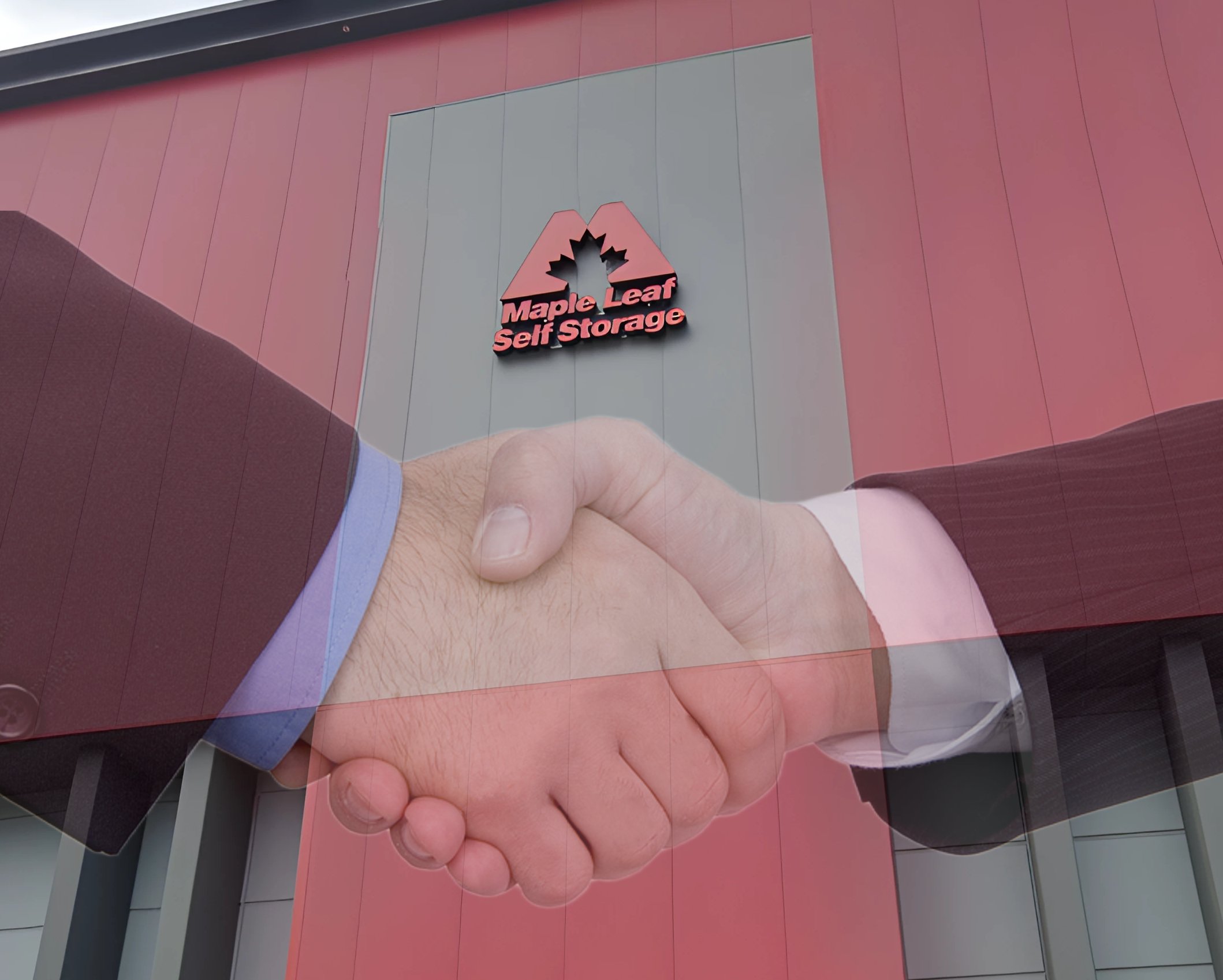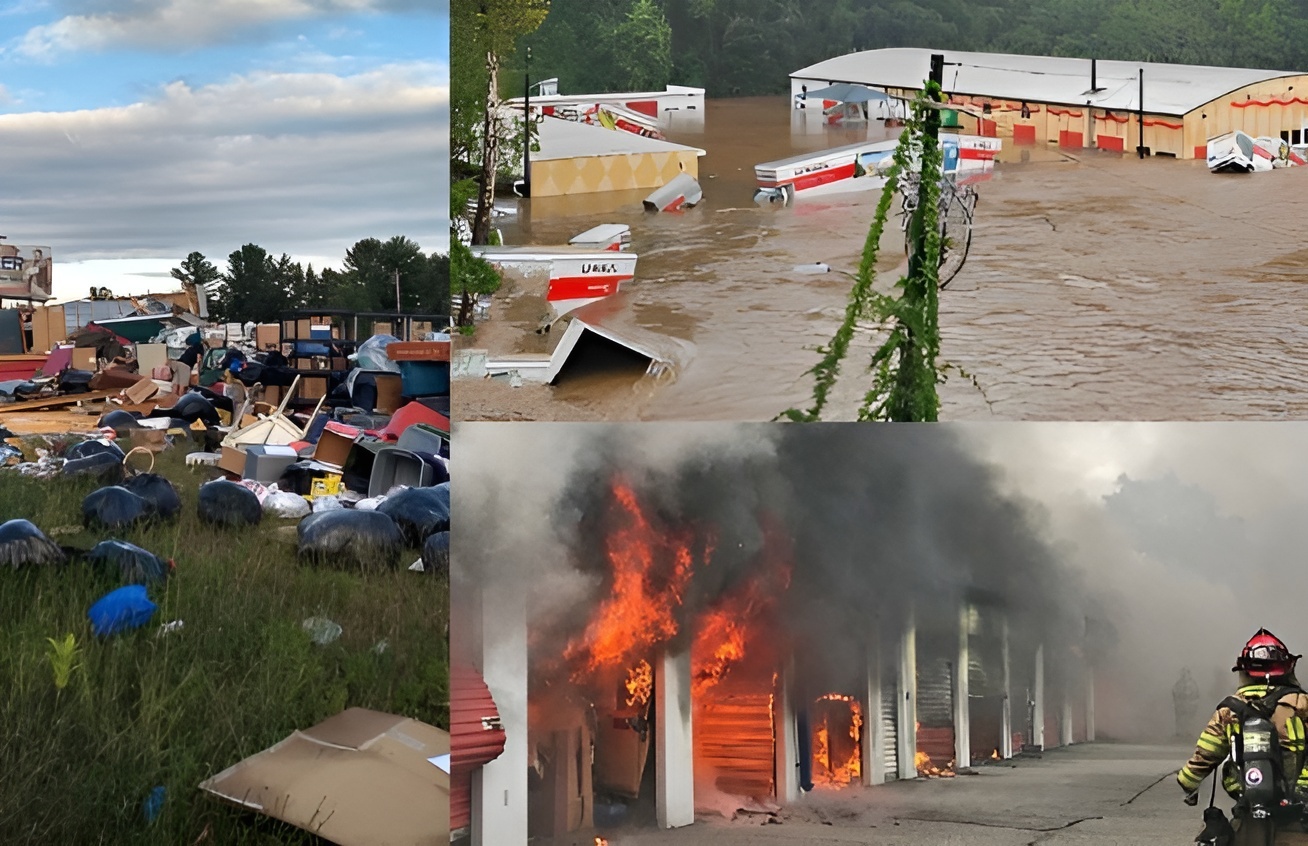No Flat Sites
Topographical Challenges In Self-Storage
By Jeffrey S. Dallenbach, AIA, in collaboration with Cheryl L. Cole
As the self-storage industry has experienced unprecedented growth over the past few years, many developers are coming to the realization that all the flat sites are gone.
Designing how the building meets the ground is critical for function, aesthetics, and water intrusion. Topography creates a diverse number of design challenges ranging from small steps in buildings to subterranean storage.
Level 1 Sites
Gradually sloping Level 1 sites can be designed with steps in the foundation that are not cost prohibitive. In many cases, steps in buildings allow for the site drainage in the drive aisles around the building perimeter that follow natural grade. Typically designed double loaded drive-up ambient buildings with six-inch steps have drive aisles that accommodate the entire drop between the roll-up doors, then the grade tapers back the center of the drive to allow the drainage to flow away from the building. Larger climate-controlled buildings also can be designed with six-inch steps by providing ramps within the corridors and drops between the units. Spacing the ramps at the demising walls between the units is typically the best solution. Delineation of the steps within the corridors is also necessary to provide reference to the users.
As sites increase in slope, building steps also increase and 12-inch steps in foundations are also designed. The typical double loaded drive-up ambient buildings can still be accommodated. While the drive aisle has more extreme drops between the units, the drive aisles are treated in a similar fashion to the six-inch drop sites. The drives do have more of a roll to them as you drive through the property, and some developers discourage the 12-inch drops. Users do not even notice the step inside the building since it is designed on a demising wall between units, but it is noticeable while accessing the unit. Larger climate-controlled buildings also can be designed with 12-inch steps by providing ramps within the corridors and drops between the units. The ramps get much more complicated as adherence to accessibility (ADA) guidelines must occur. Spacing the ramps at the demising walls between the units is typically the best solution, but the ramps are much longer, and handrails are required. This scenario results in much larger units on either side of the ramp. Delineation of the steps within the corridors is also necessary in this condition.
Design of sites result in varying cost to the developer, so conceptual planning and teamwork of the design professionals is necessary. Architect and civil engineer collaboration to educate the developer on the implications of cost versus function is essential. The ultimate design goal is to limit building steps as much as possible without increasing the sitework implications. Level area for as large a building area as possible can create additional excavation or the necessity to add fill material. The ultimate solution is to design to a “balanced” site. This solution occurs when existing soil can be reused on the site. Areas where the earth is cut into have the material relocated to areas where the foundation needs to be raised above natural grade. When the need to import or export site materials is eliminated, the most economical design solution has been reached.
Level 2 Sites
So that was the easy and economical solution for site development. Now we progress to Level 2 sites; in many instances, we are developing sites that have anywhere from 10 to 30 feet of topography change across the property. Earthen grading is another option, yet this takes up the most space, has an increase probability of erosion, and must slope away from your buildings. With more extremely sloped sites a combination of earthen grading, stepping the buildings, and retaining walls can be added to raise one side of the site and, if necessary, lower the opposite site of the site. This is a secondary approach to balance our sites as much as possible, limit addition cost, and maintain foundations that have large expanses of level floors. Retaining walls hold back a vertical face of soil that may otherwise cave or slide. Their design is typically modular block walls or concrete walls. Modular walls are more economical but require more space for design considerations in wall stability. When space is not available, concrete retaining walls are designed. Concrete walls require a global stability analysis report from the geotechnical engineer to analyze soils and provide direction on the wall design. Structural engineering of the walls is then required, and coordination of wall drainage with the civil engineer must be taken into account.
Level 3 Sites
Then come the Level 3 sites. Developers pushing into highly restricted areas may result in enough topography challenge where a split-level building, daylight basement, or entire basement may be necessary. Split-level design allows access to the building at the low side from one side of the building only. Users then progress up a sloped drive to a secondary entrance on a building at an upper floor that is accessed from the opposite side. In most cases, our designs evolve into a multi-story building with the same building footprint for all floors but entry to the building on the low side at the first floor and entry to the building on the high side at the second floor. These daylight basement buildings in a three-story scenario still function the same as a traditional multi-story building in that all floors are still accessed by an elevator. In more extreme cases, we have designed a full basement in conjunction with a daylight basement, resulting in second-floor access at the low level and third-floor access at the high side of the building. Both daylight basement and full basement designs result in higher construction costs and design implications for multiple professionals. Concrete retaining walls are designed for below grade walls by the structural engineer. The architect adds protected waterproofing at the walls, beams, and below the foundations. Coordination of drainage at the wall to resist water pressure and drain underground water is essential. Collaboration in the design by the architect, geotechnical engineer, structural engineer, and civil engineer is mandatory for an effective solution. In addition to drainage challenges, coordination between the architect, structural engineer, and civil engineer is required when the building comes out of the ground and the retaining walls meet the exterior wall panels. The walls must extend out of the finished ground enough to allow proper material transitions and eliminate water intrusion into the building. These Level 3 challenges come at a high price to developers and they also create a high risk for water penetration. Subterranean design and construction must be thoroughly analyzed from a risk vs. reward standpoint in the early phases of project development.
Are there any flat sites left? Topographic design when designed level by level will result in the most economical solution for the property. But, please keep in mind that as a building comes to life, stepping down a hillside, there has been much collaboration and teamwork with multiple design professionals and developers to create the development. Extreme topographical design challenges that have been overcome properly result in dynamic self-storage properties.
Jeffrey S. Dallenbach, AIA, is an architect and founder of San Antonio, Texas-based ARCHCON Architecture.
More Content
Popular Posts
The self storage industry is in a precarious...
Joe Shoen, CEO of U-Haul, has had enough.
Like its name implies, Surprise, Ariz., a...
Joe Shoen has had enough.
In a record-breaking deal finalized May 12,...
Senate Bill 709 (SB709) has many in the...
Donald Trump has just reclaimed the White...
The question of “abandonment” of stored...
Self-storage operators wear a lot of hats....
In 1992, Clinton strategist James Carville...
Recent Posts
When Neville Kennard left for a work trip to...
Self-storage software is no longer...
The self-storage industry continues to...
Fires in California. Tornadoes in Kansas....
From policy pivots in Ottawa to tariff...
Self-storage operators have struggled to...
Their signature red coats may draw attention...
Nailing down Josh and Melissa Huff for an...



















